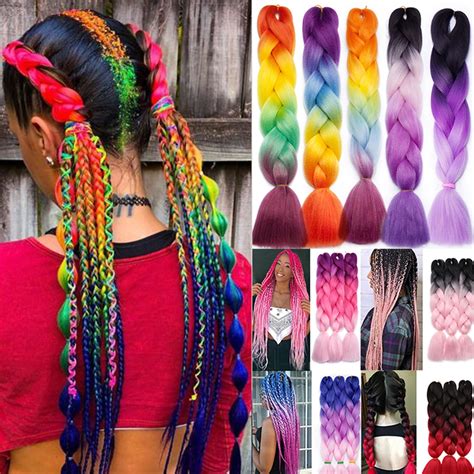1. Embrace the Braided Bun: A Chic and Effortless Updo
The braided bun, a timeless classic, seamlessly blends elegance and ease. With a few simple twists and tucks, you can transform your hair extensions into a sophisticated updo perfect for any occasion.

Pain Point: Time-consuming and complex updos.
Motivation: Effortless and polished hairstyle.
2. Crown Yourself with a Fishtail Halo Braid: A Majestic Accessory
The fishtail halo braid, a mesmerizing masterpiece, encircles your head like a regal crown. Intricately interwoven strands create a mesmerizing effect that will turn heads.
Pain Point: Lack of volume and texture.
Motivation: Striking and voluminous hairstyle.
3. Unleash Your Inner Goddess with a Half-Up, Half-Down Braid: A Versatile Statement
The half-up, half-down braid, a versatile chameleon, combines the allure of an updo with the freedom of loose hair. Whether you’re running errands or attending a special event, this braid will complement any outfit.
Pain Point: Lack of style versatility.
Motivation: Multifaceted hairstyle suitable for various occasions.
4. Channel Your Inner Mermaid with a Braided Pigtail: A Whimsical Wonder
The braided pigtail, a playful and youthful creation, evokes the carefree spirit of a mermaid. Experiment with different braiding techniques and embellishments to create a unique and charming style.
Pain Point: Monotonous and unexciting hairstyles.
Motivation: Uninhibited and imaginative hairstyle.
5. Dare to Be Different with a French Twist Braid: A Modern Masterpiece
The French twist braid, a contemporary twist on a classic, adds a touch of sophistication to your everyday look. With a sleek and elegant finish, this braid is perfect for those who embrace minimalism.
Pain Point: Lack of originality in hairstyles.
Motivation: Sleek and refined hairstyle exuding modernity.
The Ultimate Guide to Braiding Hair Extensions
Step 1: Choose the Right Braiding Technique
- Consider the length and texture of your hair extensions.
- Experiment with different braiding techniques to find what works best for you.
- Tip: Practice on a mannequin head to perfect your skills.
Step 2: Prepare Your Hair Extensions
- Brush the hair extensions thoroughly to remove any tangles.
- Section the hair into manageable chunks for easier braiding.
- Tip: Use a detangling spray to prevent breakage.
Step 3: Braid Away!
- Divide a section of hair into three equal strands.
- Cross the left strand over the middle strand and then the right strand over the new middle strand.
- Repeat the process until the braid reaches the desired length.
- Tip: Hold the strands tightly to create a secure braid.
Step 4: Secure the Braid
- Use a hairband or bobby pins to secure the end of the braid.
- Tip: For a sleeker finish, tuck the loose ends under the braid.
Step 5: Experiment with Embellishments
- Add hair accessories such as beads, ribbons, or flowers to personalize your braid.
- Tip: Experiment with different colors and textures for a unique look.
Braiding Hair Extensions: A Boon for Stylists and Clients
According to the American Hairdressing Association, the global hair extensions market is projected to reach $12 billion by 2025. This surge in popularity can be attributed to:
- Increased demand for hair styling versatility
- Accessibility to high-quality hair extensions
- Growing awareness of hair extension techniques
The benefits of braiding hair extensions extend beyond aesthetics:
- Lengthens Hair Instantly: Adds volume and length, creating the appearance of fuller hair.
- Protects Natural Hair: Shields natural hair from heat styling, chemicals, and environmental damage.
- Enhances Style Options: Offers endless styling possibilities, allowing for versatile updos, half-ups, and braids.
FAQs About Braiding Hair Extensions
Q: Can I braid any type of hair extensions?
A: Yes, you can braid most types of hair extensions, including clip-ins, tape-ins, and fusion extensions.
Q: How often should I re-braid my hair extensions?
A: The frequency depends on the type of braid and the lifespan of your hair extensions. As a general rule, re-braid every 2-4 weeks.
Q: Can I braid my hair extensions myself?
A: While possible, it requires some practice and skill. It’s recommended to seek professional assistance for complex braiding techniques.
Contact the Experts for Professional Braiding
If you’re looking for a flawless braiding experience, seek the expertise of a trained hairstylist. Our team of skilled professionals specializes in creating stunning braid hairstyles using premium-quality hair extensions.
Schedule your appointment today and let us take your hair to the next level!
Table 1: Common Braiding Techniques for Hair Extensions
| Technique | Description | Difficulty |
|---|---|---|
| Three-Strand Braid | The classic braid technique | Easy |
| French Braid | A variation that adds volume and depth | Moderate |
| Fishtail Braid | A delicate and feminine braid | Moderate |
| Halo Braid | A braid that encircles the head | Advanced |
Table 2: Hair Extension Types Suitable for Braiding
| Hair Extension Type | Braiding Suitability |
|---|---|
| Clip-In Extensions | Yes, easy to braid |
| Tape-In Extensions | Yes, professional application recommended |
| Fusion Extensions | Yes, professional application required |
| Sew-In Extensions | Not suitable for braiding |
Table 3: Benefits of Braiding Hair Extensions
| Benefit | Description |
|---|---|
| Lengthens Hair | Adds length and volume to natural hair |
| Protects Natural Hair | Shields natural hair from damage |
| Enhances Style Options | Offers versatility in styling |
Table 4: Hair Extension Maintenance Tips for Braids
| Tip | Description |
|---|---|
| Re-braid Regularly | Maintain the integrity of the braid |
| Use Heat Protectant | Protect hair extensions from heat styling |
| Avoid Over-Brushing | Prevent tangles and breakage |
| Apply Hair Oil | Nourishes hair extensions and prevents dryness |
